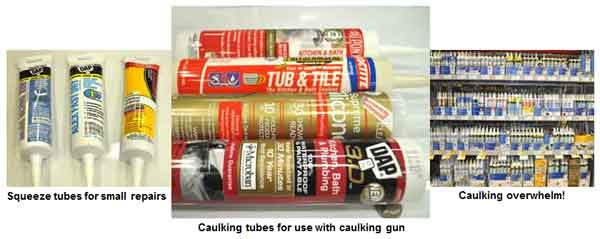 Home repair is a challenge for everyone. Even a homeowner “handyman” has to look at a project and create a list of the tools and materials. They'll start gathering what they need in their home workshop before heading out to store, so it sometimes make sense to split your home repair projects in half – one day for prep, the second day to “do it”.
Home repair is a challenge for everyone. Even a homeowner “handyman” has to look at a project and create a list of the tools and materials. They'll start gathering what they need in their home workshop before heading out to store, so it sometimes make sense to split your home repair projects in half – one day for prep, the second day to “do it”.
A successful home repair project is one you complete in one day, with only one trip to the store! My passion is helping women homeowners gain the confidence to handle any home repair or remodeling project. I don't expect you to do everything yourself (that's why we have a directory of home professionals) but there are basic skills you can learn to handle the most common home repairs.
Last night I stopped at Lowe's to take some photos and here's what I learned …
Caulking, A Common Home Repair
Box stores can be overwhelming. My handyman technicians always knew where to find the materials they wanted but they go one/more days a week. You'll save time by asking where to find things and wouldn't it be nice if there was a directory at the door?
Finding the caulk aisle was easy but with 200+ kinds of caulking, picking the right one is a challenge. That's why we've written a series of articles on caulking starting with How to Pick the Right Caulk.
Lowe's had a few scraping tools near the caulking with a larger selection of scraping and removal tools one aisle over, near the painting products. I couldn't find the backer rods needed to fill really deep or wide gaps before applying caulk, and got several people searching. We finally “found” the backer rods near the weatherstripping products. That's why you need to research and write down the materials and tools you need before you go to the store!
Replacing a Screen: An Easy Home Repair?
Screen repairs are another common home repair. It's easy to remove the old screen fabric, and requires some experience and patience to use the spline roller tool. The biggest challenge when replacing old screen fabric is finding the same fabric to match what you have.
Screen fabrics come in lots of different materials, colors and a variety of fabric weights and hole sizes and each store carries products from different manufacturers. Maybe you're beginning to realize why this home repair isn't so simple, and why many homeowners prefer calling a handyman versus being a home diy (do-it-yourself) You'll also need the tubular “screen spline” that is used to hold the screen fabric in place, comes in different sizes based on the size of the channel. What seemed the most practical was the 3-in-1 spline kit that includes the 3 most common diameters, in case you forgot to measure your existing spline.
Home Repairs Start with Research
By now you've realized that home repair projects require knowledge, skill gained from practice and the right tools and materials. If you're a home DIY, pick home repair projects that get done on a regular basis, to make the time you spend building your skills worthwhile. If you don't have the interest or time, hire a handyman and save money, by buying the materials for your each home repair project on your list.
We love when our readers share their home repair stories
… to help us identify the home repair tips you want to read!
Credit for backer rod photo (upper left) goes to www.demandproducts.com which sells to businesses in quantities of 330 to 2,500 linear feet.






Leave a Reply